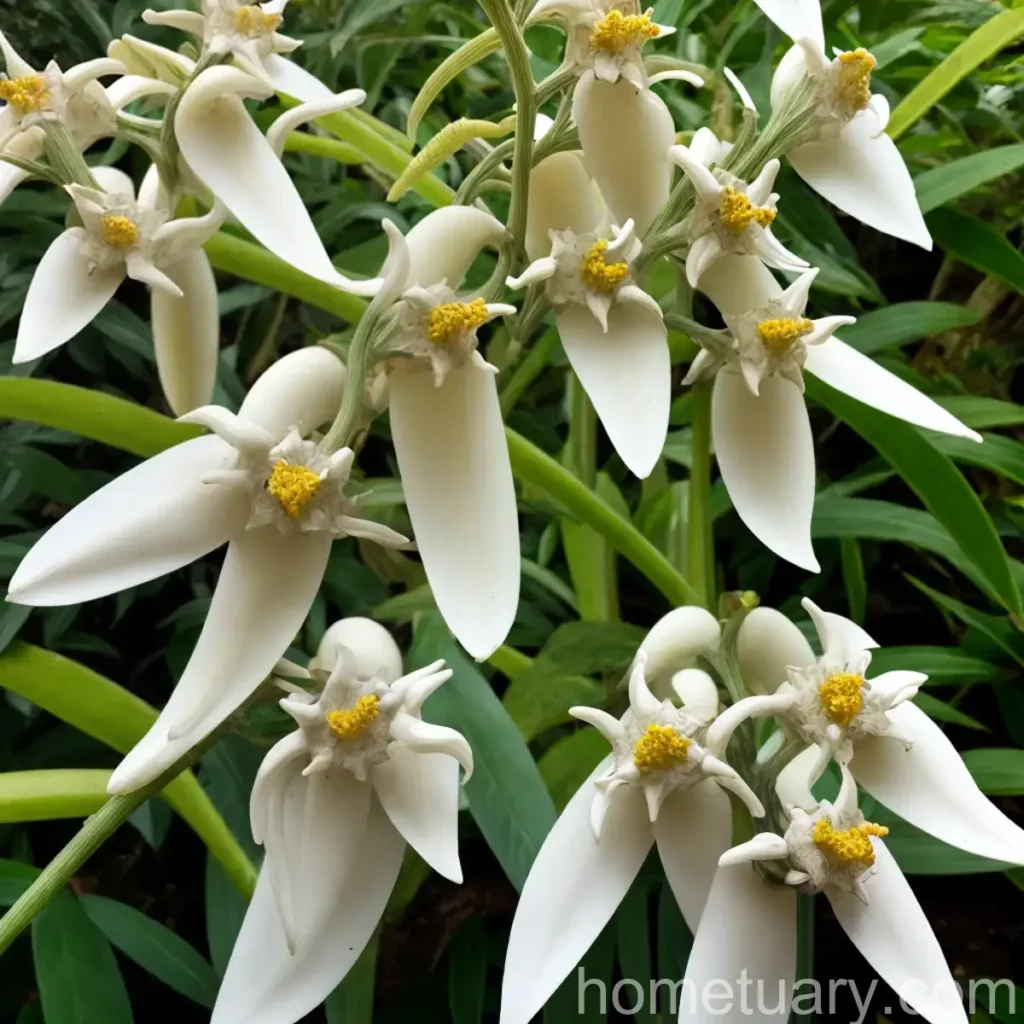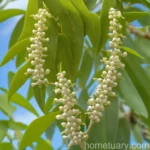Understanding Wingnut (Pterocarya x Rehderiana)
Introduction
As a plant scientist, I have had the opportunity to study a variety of plant species, each with its unique characteristics and requirements for growth. In this blog post, I will delve into the fascinating world of the Wingnut tree, scientifically known as Pterocarya x rehderiana. This deciduous tree species has garnered attention from horticulturists, botanists, and gardening enthusiasts due to its remarkable features and multiple uses. From its cultural significance to its specific needs for water, sunlight, soil, and fertilizer, I will cover everything you need to know about the care and cultivation of the Wingnut tree.
What is the Wingnut Tree?
The Wingnut tree, or Pterocarya x rehderiana, is a deciduous tree that belongs to the Juglandaceae family. It is a hybrid species resulting from the crossbreeding of two other Pterocarya species, Pterocarya stenoptera and Pterocarya fraxinifolia. This tree is recognized for its large, spreading canopy and unique winged nuts, from which it derives its common name.
Key Takeaways – Wingnut (Pterocarya x Rehderiana)
Before delving into the details of caring for the Wingnut tree, let’s summarize some key points about this remarkable plant:
- Common Name: Wingnut tree
- Scientific Name: Pterocarya x rehderiana
- Family: Juglandaceae
- Hybrid Species: Cross between Pterocarya stenoptera and Pterocarya fraxinifolia
- Unique Feature: Winged nuts
- Deciduous: Shedding leaves annually
- Canopy: Large and spreading
With these key takeaways in mind, let’s explore the specific care requirements and traits of the Wingnut tree.
Culture
Uses
The Wingnut tree holds cultural significance in various regions due to its aesthetic appeal, shade provision, and versatile wood. Understanding its uses is essential for appreciating the plant’s value in different contexts.
- Aesthetic Appeal: The Wingnut tree is often cultivated for its ornamental value, as it offers a striking visual display with its large canopy and unique winged nuts.
- Shade Provision: Due to its sprawling growth habit and expansive canopy, the Wingnut tree serves as an excellent shade provider in parks, gardens, and urban landscapes.
- Wood: The wood of the Wingnut tree is valued for its strength and durability, making it suitable for use in furniture, joinery, and construction.
Care Requirements
Caring for the Wingnut tree involves providing optimal conditions for its growth and maintenance. Understanding its specific requirements for water, sunlight, fertilizer, soil, pruning, and propagation is crucial for cultivating healthy and vibrant specimens.
Water
Proper watering is essential for the health and vitality of the Wingnut tree, especially during its initial establishment and periods of drought.
- Young Trees: Newly planted Wingnut trees require regular watering to support root development and establishment. Adequate moisture is crucial during the first few years of growth.
- Established Trees: Mature Wingnut trees are moderately drought-tolerant once their root systems are well-established. However, supplementary watering during prolonged dry spells can promote overall tree health and vigor.
Sunlight
Sunlight plays a vital role in the growth and development of the Wingnut tree, influencing its overall form and flowering patterns.
- Full Sun: The Wingnut tree thrives in full sun, which enables optimal photosynthesis, sturdy growth, and the production of its distinctive winged nuts. Placing the tree in a location with ample sunlight exposure is essential for robust and healthy growth.
Fertilizer
Appropriate fertilization supports the Wingnut tree’s nutritional needs, enhancing its vigor and promoting lush foliage and abundant flowering.
- Nutrient Requirements: Wingnut trees benefit from a balanced fertilizer application, particularly in early spring before the onset of new growth. A slow-release, balanced fertilizer can provide essential nutrients to support overall tree health and vitality, including nitrogen, phosphorus, and potassium.
Soil
Understanding the preferred soil conditions for the Wingnut tree is essential for ensuring optimal growth and nutrient uptake.
- Well-Draining Soil: Wingnut trees thrive in well-draining soil that prevents waterlogging and promotes healthy root development. Amending heavy clay soils with organic matter can improve drainage and aeration, creating an ideal growing environment for the tree.
- pH Level: The optimal soil pH for Wingnut trees ranges from slightly acidic to neutral, typically between 6.0 and 7.5. Testing the soil pH and making necessary adjustments can support optimal nutrient uptake and overall tree health.
Pruning
Pruning is a valuable maintenance practice for shaping the growth of the Wingnut tree, removing dead or diseased branches, and promoting overall tree health and structure.
- Regular Pruning: Periodic pruning can help maintain the desired shape and form of the Wingnut tree, promoting an open canopy and proper branch spacing. Pruning dead or damaged branches also prevents disease spread and enhances the tree’s aesthetic appeal.
- Pruning Timing: Prune Wingnut trees during the dormant season in late winter to early spring to minimize stress and maximize regrowth potential.
Propagation
Propagation techniques enable the multiplication of Wingnut trees for ornamental or landscape use, allowing horticulturists to propagate specific cultivars or unique specimens.
- Seed Propagation: Propagating Wingnut trees from seeds involves collecting mature nuts, removing their husks, and sowing them in a prepared seedbed or containers. Adequate moisture and warmth support seed germination and early growth.
- Cutting Propagation: Hardwood or softwood cuttings can be used to propagate specific cultivars or maintain desirable traits in new plantings. Rooting hormone application and careful environmental control promote successful cutting propagation.
Container Popularity
The Wingnut tree’s adaptability to container cultivation has contributed to its popularity among urban and space-restricted gardeners, enabling its incorporation into diverse landscapes and gardens.
- Urban Landscapes: Wingnut trees in containers serve as valuable additions to urban landscapes, providing shade, aesthetic appeal, and greenery in limited spaces such as patios, balconies, and rooftops.
- Versatility: Container-grown Wingnut trees offer versatility in design and placement, allowing for creative landscape arrangements and adaptable gardening solutions.
Container Common Diseases
While container cultivation offers numerous benefits, it is essential to be aware of potential diseases and pests that may affect Wingnut trees grown in containers.
Disease Diagnosis
Understanding common diseases and their symptoms is crucial for early detection and prompt treatment of container-grown Wingnut trees.
- Anthracnose: This fungal disease can lead to leaf spots, defoliation, and twig dieback in container-grown Wingnut trees. Fungal spore dissemination is facilitated by wet conditions, necessitating proper sanitation and fungicidal treatments.
- Root Rot: Overly wet or poorly draining soil in containers can create conditions favorable for root rot diseases. Yellowing foliage, wilting, and stunted growth are common symptoms, necessitating improved drainage and soil management.
Common Pests
Container-grown Wingnut trees may be susceptible to various pests, requiring vigilant monitoring and appropriate pest management strategies.
- Aphids: These small insects can infest the foliage of container-grown Wingnut trees, causing leaf distortion, honeydew production, and reduced overall tree vigor. Natural predators, insecticidal soaps, or horticultural oils can effectively manage aphid infestations.
- Scale Insects: Scale infestations can affect the stems and foliage of container-grown Wingnut trees, leading to reduced sap flow, yellowing, and stunted growth. Pruning infested branches and applying horticultural oils can help control scale populations.
Botanist’s Tips
As a seasoned botanist, I have gathered valuable insights and tips for successfully cultivating and caring for Wingnut trees, which can enhance their growth and enable gardeners to appreciate their distinctive qualities.
- Soil Preparation: Amending the soil with organic matter and ensuring proper drainage can create an optimal growing environment for Wingnut trees, promoting robust root development and overall tree health.
- Regular Monitoring: Vigilant monitoring for signs of disease, pest infestations, and nutrient deficiencies is crucial for maintaining the health and vitality of Wingnut trees, enabling prompt intervention and treatment as needed.
Fun Facts
Wingnut trees have several captivating attributes and qualities that make them a delightful addition to gardens and landscapes. Here are a few fun facts about these remarkable trees:
- Ancient Origins: The genus Pterocarya, to which the Wingnut tree belongs, has a fossil record dating back to the Paleocene, showcasing its ancient lineage and evolutionary history.
- Wildlife Habitat: Wingnut trees provide valuable habitat and food sources for various wildlife, including birds and small mammals, enhancing biodiversity in natural and cultivated landscapes.
- Autumn Splendor: During the fall season, Wingnut trees adorn themselves with vibrant hues of yellow, gold, and bronze, creating a stunning display of autumn colors.
Links to External Resources
To further enrich your understanding of the Wingnut tree and its care, I recommend exploring the following external resources:
- Royal Horticultural Society – Pterocarya x rehderiana
- Missouri Botanical Garden – Pterocarya x rehderiana
- USDA Plants Database – Pterocarya x rehderiana
In conclusion, the Wingnut tree, or Pterocarya x rehderiana, captivates enthusiasts and horticulturists with its unique characteristics, cultural significance, and ornamental value. By understanding and meeting its specific care requirements, gardeners can cultivate thriving Wingnut trees that contribute to the beauty and diversity of landscapes and gardens. Whether appreciated for its aesthetic appeal, shade provision, or cultural significance, the Wingnut tree holds a special place in the world of horticulture and botanical exploration.
As we continue to explore the diverse realm of plant species, the Wingnut tree stands out as a testament to nature’s beauty and resilience, offering enduring value and appreciation for generations to come.
Thank you for joining me on this journey of discovery and appreciation for the remarkable Wingnut tree!
Keywords: Wingnut tree, Pterocarya x rehderiana, Wingnut plant, Wingnut tree care, Pterocarya rehderiana, Wingnut tree species, Wingnut tree facts, Wingnut tree identification, Pterocarya x rehderiana care, Wingnut tree varieties, Wingnut tree pruning, Wingnut tree growth, Pterocarya x rehderiana plant, Wingnut tree features, Wingnut tree benefits, Wingnut tree propagation, Pterocarya rehderiana cultivation, Wingnut tree gardening, Wingnut tree landscape, Pterocarya x rehderiana diseases, Wingnut tree pests, Wingnut tree leaves, Pterocarya x rehderiana characteristics, Wingnut tree uses, Wingnut tree planting, Pterocarya rehderiana habitat, Wingnut tree environment, Wingnut tree lifespan, Pterocarya x rehderiana growth rate, Wingnut tree soil requirements, Wingnut tree pruning techniques, Pterocarya rehderiana tree care tips, Wingnut tree landscape design, Wingnut tree diseases and treatments, Pterocarya x rehderiana leaf structure, Wingnut tree root system, Wingnut tree climate adaptability, Pterocarya rehderiana bark appearance, Wingnut tree pollination, Wingnut tree flower types, Pterocarya x rehderiana wood characteristics, Wingnut tree drought tolerance, Wingnut tree sun exposure, Pterocarya rehderiana wildlife value, Wingnut tree autumn colors, Wingnut tree fragrance, Pterocarya x rehderiana leaf shedding, Wingnut tree ornamental qualities, Wingnut tree winter hardiness, Pterocarya rehderiana shade tolerance















